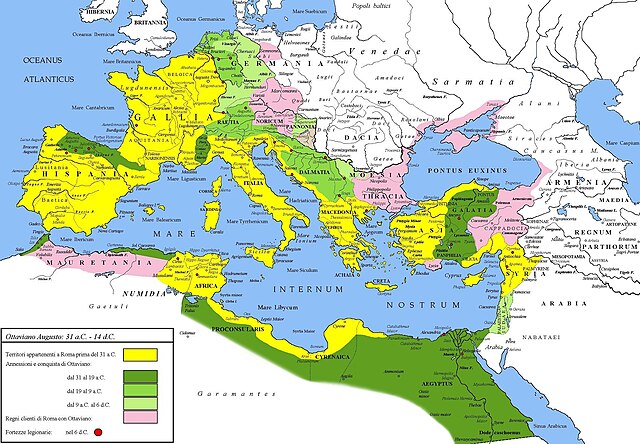Hispania Tarraconensis was one of three Roman provinces in Hispania. It encompassed much of the northern, eastern and central territories of modern Spain along with modern northern Portugal. Southern Spain, the region now called Andalusia, was the province of Hispania Baetica. On the Atlantic west lay the province of Lusitania, partially coincident with modern-day Portugal.
Augustus, wearing the toga of a consul, the role that he held in 27–6 BC when he founded Tarraco.
Denarius of Tiberius. The introduction of Roman coinage throughout Tarraconensis allowed its inhabitants to engage more closely with the commercial networks of the Mediterranean world.
Epitaph of L. Valerius Reburrinus, frumentarius of the Legio VII Gemina, who was an important member of the governor's officium under Septimius Severus.
Division of Hispania into provinces and conventus
The Roman provinces were the administrative regions of Ancient Rome outside Roman Italy that were controlled by the Romans under the Roman Republic and later the Roman Empire. Each province was ruled by a Roman appointed as governor.
Roman Empire under Augustus (31 BC – AD 14), showing the empire as of 31 BC in yellow, additions to 19 BC in dark green, additions in 9 BC in light green, and additions to AD 6 in pale green. Client states in mauve.





